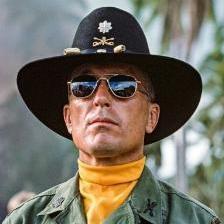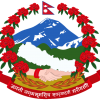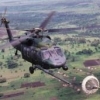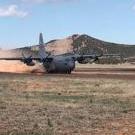Leaderboard
Popular Content
Showing content with the highest reputation on 01/20/2012 in all areas
-
Have read this before but saw it on the new AF website again https://www.af.mil/specials/courage/story.html "We've got a motto for a reason: these things we do that others may live." Technical Sergeant James Davis said somewhat casually, just days after risking his life to save two Army helicopter pilots from an unforgiving valley in Afghanistan. Along with his crew, Sergeant Davis makes up an elite group of Airmen who serve as Combat Search and Rescue Aircrews – the professionals who go in with helicopters, hoists, and guns, putting their lives on the line to save others in hostile situations. He deployed to Afghanistan as an HH-60 Pave Hawk flight engineer, manning a 50-caliber machine gun and operating the hoist on the helicopter. On April 23, 2011, Sergeant Davis would be part of a harrowing rescue mission that would test the courage, endurance and limits of all involved. The situation began prior to daybreak, when Bagram Airfield's operations center received a report of a Fallen Angel – a term signifying a downed aircraft. Within 10 minutes, Pedro 83 and 84, two HH-60 Pave Hawk aircraft, were airborne and en route to the site. Once on-scene they linked up with other aircraft in the area: USAF F-15E Strike Eagle fighters, US Army AH-64 Apache helicopters, and OH-58D Kiowa Warrior helicopters. The Apaches used a laser to point out the location of one of the pilots. "At this time, we had thought that the pilots were collocated, and that they'd egressed (escaped) together from the aircraft," said Captain Louis Nolting, the Pedro 84 co-pilot. But they hadn't. One of the pilots had climbed several hundred feet up a mountainous ridgeline above the crash; the other was reported to still be at the site – unconscious. Pedro 83 dropped its pararescuemen (PJ) team down to the pilot on the ridgeline and Pedro 84 inserted its team near the wreckage to help the other. The steep terrain forced the Pedro 84 PJ team down a harrowing 180-foot hoist-assisted descent to get to the site. Unfortunately, upon arrival, they discovered the second pilot had died from his wounds. After recovering the pilots, the PJ teams prepared for immediate extraction. But a difficult situation was about to get worse. Overhead, Sergeant Davis, onboard Pedro 84, retrieved the hoist cable and was moving back into position when the rescue team began to take fire. "Not more than two seconds after forward momentum was executed ... pop shots," said Staff Sergeant William Gonzalez, Pedro 84 gunner. "The first thing we start doing is checking to see where it's coming from and checking everybody out. And, maybe five seconds later the (flight engineer) says, 'I'm hit.'". A round had come right through the side of the helicopter hitting Sergeant Davis in the leg. "They asked, 'Are you all right, Jim?' and I said, 'No I'm bleeding pretty good here,'" Sergeant Davis remembered. "I looked back, and the first thing I saw was a pool of blood by his seat," Sergeant Gonzalez said. "I went over to assess his situation. He was still conscious. He was still breathing. I put his tourniquet right above the wound. [Then] I went over to the PJ's medical kit and grabbed some gauze, and I wrapped it around the leg to absorb as much blood as I could.". Sergeant Davis needed medical attention and fast. Pedro 84 had no choice; they had to return to base. With Pedro 83 and the other aircraft remaining at the crash site, they headed back at maximum speed, leaving their PJ team of Staff Sergeant Zachary Kline and Staff Sergeant Bill Cenna on the ground with the fallen pilot. Technical Sergeant Heath Culbertson awoke to frantic knocking on his door. He was in crew rest status, sleeping at Bagram Airfield, Afghanistan. "They said, 'Get up, we need you in the TOC (Terminal Operations Center) now,'" Sergeant Culbertson said. "I asked, 'What's going on?' and they said, 'Davis has been shot.'" He sprang to action, but the reality of the situation did not hit him until he got to the aircraft. "As soon as I got underneath the rotor, I saw the blood," he remembered. "It was pretty surreal. I'd seen blood before in the cabin, but never from any of our own guys. That was pretty shocking to me." The crew swap took less than four minutes. Sergeant Culbertson and the rest of the Pedro 84 crew raced back to the crash site. Back on the ridge above the crash site, the second PJ team, Major Jesse Peterson and Technical Sergeants Chris Uriate and Shane Hargis, treated the injured pilot and prepared for extraction. Major Peterson, the team commander, coordinated with Pedro 83 for pick-up and passed information about the situation on the ground. The pilot was stable, but the clock was ticking and enemy fighters swarmed just below the ridgeline. Overhead, Pedro 83 swept the area, searching for the enemy. "As we came around, I saw rounds come up so I returned fire," said Senior Airman Justin Tite, Pedro 83's door gunner. "There were no other trees on the slope except this one huge tree right in the middle between the two teams, and that's where they were hiding." The two PJ teams' positions were split by the enemy in the middle. There would be no link-up before extraction. As enemy fire intensified, Pedro 83's pilot, Captain Joshua Hallada, decided they needed to get the PJ team and the pilot off the ground as soon as possible. "We set ourselves up to come in for a hover. Being that it [the helicopter] was a little lighter now, we brought it 20-feet over our team and the survivor," he said. Quickly they lowered the hoist, but as the PJs and the flight engineer worked to get the survivor into the aircraft, enemy fire errupted. A hot landing zone was getting hotter. "The team started to hook up the survivor and that's when the pilot started to call rounds off the one o'clock," said Senior Airman Michael Price, the Pedro 83 flight engineer. Airman Price had a tough decision to make. "I sheared the cable to stop from dragging them through the rocks," he said. Airman Price used the guillotine-type device built into the hoist to cut the cable. It was a tough call to make, but his actions prevented further injury to the Airmen below. Down below, Sergeant Hargis, a PJ team member, was strapped into the hoist with the surviving pilot. "I gave them the signal to bring up the cable, and I noticed a little more slack coming out. I thought maybe he didn't see me so I gave him the signal again and the next thing I know, the cable's sheared," he said. ith Pedro 84 off-station, a sheared hoist, and enemy fire increasing, the situation was deteriorating. Captain Hallada acted fast. Using a one-wheel hover, he positioned the helicopter beside the ridgeline, allowing the PJs and downed pilot to jump on. In just 10 seconds everyone was on board and they took off, but it wasn't fast enough. "We went back into our overwatch patterns, realizing we'd been hit," Captain Hallada said. The helicopter was struck by enemy fire. Damaged, running low on fuel and without a hoist, Pedro 83 was in a perilous situation. However, they decided to remain on the scene to provide cover to the second PJ team and pilot still on the ground. After several harrowing moments, they heard that Pedro 84 was on its way back, and they immediately left to refuel and rearm. Once on the ground at Bagram, the PJs transferred the injured pilot to the field surgical team while Airman Price looked over the aircraft to evaluate the damage. Upon first glance, it appeared minimal. Then he checked the main transmission fluid – bone-dry, yet the Pave Hawk had brought them all back safely. The aircraft would not fly again that day. The crew needed to find a spare aircraft and fast. In a whirlwind coordination effort, they secured another helicopter at a separate base and brought it back to rejoin the fight. Back on scene at the crash, Pedro 84 arrived to find close air support had joined the fight. Four USAF A-10 Warthogs circled overhead and three Army AH-64 Apaches were firing at enemy forces. However, the insurgents would not relinquish the fight. Pedro 84 made an attempt to extract the PJs and fallen pilot. They teamed with an Army Apache helicopter and moved to the landing zone. While guiding the pilots down for landing, Sergeant Culbertson began to hear what he thought may be gunfire. "I heard whistling by my head," he said. "But, I thought to myself, 'That can't be. I've got my helmet on. There's no way I'm hearing the hisses.'" Seconds later, Sergeant Culbertson heard impacts on the aircraft and realized they were indeed under enemy fire. He began searching for the source. "Next thing I know, I get thrown on my console," he said. "I still didn't know what was going on at that point. But from this vantage point, I could see under my gun, and I could see the muzzle flashes. I remember shaking my head to clear it, and then just a rage of fury came over me. I called for the go around, turned the gun power switch on, and just started unleashing the .50-cal on these two points of origin," he said. Later, Sergeant Culbertson would learn a bullet had entered the right side of his helmet, through his visor and exited the other side of the helmet without injuring him. Though it seemed like slow motion, it all took place in about four seconds. Captain Nolting credits Sergeant Culbertson's quick and collected response to saving the aircraft. "Without him returning that fire, there was a chance that our right engine or hydraulics could have been shot out," he said. With plenty of air support on scene to protect the team on the ground, Pedro 84 once again returned to base to refuel. On the ground they looked over the damage to their aircraft. Then they realized that not only had Sergeant Culbertson been hit, but so had Sergeant Gonzalez. "I initially counted seven rounds that had impacted the cabin," Sergeant Gonzalez said. "And then, I noticed the one that was under my seat. It had come from under my seat and fragged outward. One piece missed my right knee, and the other actually bounced off my knee and went through my knee pad." But neither injury nor damage would keep the Pedro 84 crew away. The helicopter was still airworthy and the crew prepped to return to battle. Back at the crash site, Sergeants Kline and Cessna hunkered down by the wreckage waiting for the Pave Hawks to return. In time they started taking enemy fire. The aircraft above provided cover, but the PJs knew they had to find an escape route. A ravine 25 meters away was their only out. Increasingly hostile fire made the decision for them. "It felt like 30 rounds were all around us all within a two- to four-second period. They just hit everywhere," Sergeant Kline said. "They hit the aircraft, and it went up in flames. It quickly overtook the aircraft, and I yelled at (Sergeant Cenna) to get the hell out of there. I had noticed during my initial scan of the aircraft that there was still a rocket pod with rockets in it. That was my concern; that it was going to be like the Fourth of July." As predicted, moments later the crashed helicopter exploded. The PJs sprinted to the ravine as enemy gunfire erupted around them. On the radio, aircraft overhead provided updates about the enemy who was quickly closing in on their position. "They were like, 'There are these guys 300 meters to the north of you; we're going to go hot on them.' We could feel the concussion from the rockets," remembered Sergeant Kline. Pedro 83 had returned to Bagram Air Field and together again with Pedro 84, the crews left to recover their PJs and the fallen pilot. Upon returning to the scene, the crews were alerted to another soldier in need of medical attention. While they were off-site, an Army quick reaction force had arrived on the scene to help, only to suffer casualties before landing. An RPG explosion hit one member of the QRF, who died within minutes of the call. Another soldier had been hit and required immediate medical attention. Two Apaches joined the Pedro Pave Hawks, creating a four-ship rescue formation. The helos moved towards the medical evacuation landing zone. Yet the number of enemies on the ground and firepower they wielded proved almost impossible to overcome. During the first attempt to land, Pedro 84 began descending into the ravine as the other three aircraft provided cover. "As we got down to about 30 feet, Sergeant Gonzalez and I starting seeing muzzle flashes from this one building 200 to 300 feet from us," Captain Louis Nolting, Pedro 84's pilot, described. The gunfire forced a go-around. Captain Nolting worked to get the aircraft out of the valley, while the flight engineer and PJs onboard engaged targets in the building. Barely skimming over wires strung along the valley, the captain flew Pedro 84 out the zone. They formed back up for another pass. In the meantime, Pedro 83 moved in to attempt an extraction. "As we were about to set down, we were engaged, and all of the aircraft returned fire, including the Apaches," Captain Hallada said. Extraction would not be possible. "As we took off, I immediately saw the wires out the windscreen, and I pulled everything the rotor system had to get over them," Captain Hallada said. Finally, after a third unsuccessful attempt, the crews succeeded with the help of a heavily-armed Apache on the fourth try. Pedro 83 extracted the injured soldier. They also saw a golden opportunity to get their PJs. In all the chaos, Pedro 84's hoist had broken. There was still a chance it would work in backup mode. It would run very slowly, but it was the only option. "I said a little prayer," said Sergeant Culbertson, on Pedro 84, as he lowered the cable. "And it worked." Even though the PJ team had been on the ground for more than five hours, they chose to ensure the fallen pilot made it home. The PJs strapped the pilot to the hoist first without hesitation. For Sergeant Kline, the decision was easy. "We were going to do everything in our power to get him back," he said. "If I had to clip in and hold him, I would have. There was no way he wasn't coming back." Slowly the cable crept back up towards Sergeant Culbertson in the helicopter above. After what seemed like an eternity, their fallen comrade was on board. "By this time, I was expecting for us to get shot down," Captain Nolting said. "We'd been there so long. I truly expected we were going down." But for the first time that day, the aircraft did not take any fire, and Pedro 84 extracted the remaining PJs and evacuated the area. No one was left behind. Despite all the setbacks, the rescue team had accomplished what they set out to do in the morning – bring the downed pilots back. Prior to departing to be treated at Landstuhl Regional Medical Center in Germany, Sergeant Davis reflected on the mission that day and expressed his pride in the actions of the crews of Pedro 83 and Pedro 84. "We did what we do," Sergeant Davis said. "We've got a motto for a reason: these things we do that others may live."3 points
-
3 points
-
THE COST OF DOING BUSINESS The Staggering Toll of War By Barrett Tillman Take a flight of fancy with me. Imagine that you are commander of a great air force. It has risen to global prominence, dominating all rivals. Its unprecedented success has come at a price, however. Your chief of staff lays a memo on your desk. "Last month's casualties, sir." You pick up the first sheet ... The staggering cost of war. THE PRICE OF VICTORY B-17 $204,370. P-40 $44,892. B-24 $215,516. P-47 $85,578. B-25 $142,194. P-51 $51,572. B-26 $192,426. C-47 $88,574. B-29 $605,360. PT-17 $15,052. P-38 $97,147. AT-6 $22,952. ON AVERAGE 6600 American service men died per Month, during WWII about 220 a day. PLANES A DAY WORLDWIDE From Germany/Poland Sept. 1, 1939 ending Sept. 2, 1945, Japan's surrender: 2,433 days. From 1942 onward, America averaged 170 planes a day. Nation Aircraft Average USA 276,400 113 S Union 137,200 56 G Britain 108,500 45 Germany 109,000 45 Japan 76,300 31 How Many is a 1,000 planes. B-17 production (12,731) wingtip to Wingtip would extend 250 miles. 1,000 B-17’s carried 2.5 million gallons of high octane fuel. THE NUMBERS GAME 9.7 billion gallons of gasoline consumed, 1942-1945. 107.8 million hours flown, 1943-1945. 459.7 billion rounds of aircraft ammo fired overseas, 1942-1945. 7.9 million bombs dropped overseas, 1943-1945 2.3 million combat sorties, 1941-1945 One sortie = one takeoff (and landing – hopefully!) 299,230 aircraft accepted, 1940-1945. 808,471 aircraft engines accepted, 1940-1945. 799,972 propellers accepted, 1940-1945. WWII MOST PRODUCED COMBAT AIRCRAFT IL-2 Shturmovik 36,183 Yak 1, 3, 7, 9 31,000 + Bf 109 30,480 Fw 190 29,001 Spit/Seafire 20,351 B-24/PB4Y 18,482 Thunderbolt 15,686 Mustang 15,875 Ju 88 15,000 Hurricane 14,533 P-40 13,738 B-17 12,731 Corsair 12,571 Hellcat 12,275 Pe-2 11,400 P-38 10,037 Zero 10,449 B-25 9,984 LaGG-5 9,920 Avenger 9,837 P-39 9,584 Oscar 5,919 Mosquito 7,780 Lancaster 7,377 He 111 6,508 Halifax 6,176 Bf 110 6,150 LaGG-7 5,753 B-29 3,970 Stirling 2,383 Sources: Rene Francillon, Japanese Aircraft of the Pacific war; Cajus Bekker, The Luftwaffe Diaries; Ray Wagner, American Combat Planes; Wikipedia. BALL PARK AVERAGE: Chief of Staff to General, "Hmmm; 331 men killed, and 308 aircraft destroyed. That’s 11 people and 10 planes per day." "Uh, yes, sir. Its still the ballpark average." I’d like to see an improvement in bomber losses, those really add up. "Were working on it, General. But its sad to think that 10 young men alive today will be dead tomorrow." "You know that’s the price of doing business. Now then, what about the overseas and combat losses?" According to the AAF Statistical Digest, in less than four years (December 1941 August 1945), the U. S. Army Air Forces lost 14,903 pilots, aircrew and assorted personnel plus 13,873 airplanes --- inside the continental United States. They were the result of 52,651 aircraft accidents (6,039 involving fatalities) in 45 months. Think about those numbers. They average 1,170 aircraft accidents per month---- nearly 40 a day.(Less than one accident in four resulted in totaled aircraft, however.) Those colossal losses cost the Axis powers nothing; not as much as one 7.7 mm bullet. It gets worse. Almost 1,000 Army planes disappeared en route from the U. S. to foreign climes. But an eye watering 43,581 aircraft were lost overseas including 22,948 on combat missions (18,418 against the Western Axis) and 20,633 attributed to non-combat causes overseas. In August 1943 when 60 B-17’s were shot down among 376. That was a 16 percent loss rate meant 600 empty bunks in England that night In 1942-1943 it was statistically impossible for bomber crews to complete a 25-mission tour in Europe. Pacific theatre losses were far less (4,530 in combat) owing to smaller forces committed. The worst B-29 mission, against Tokyo on May 25, 1945, cost 26 Superfortress, 5.6 percent of the 464 dispatched from the Marianas. On average, 6,600 American servicemen died per month during WWII, about 220 a day. At end of war, over 40,000 airmen were killed in combat theatres and another 18,000 wounded. Some 12,000 missing men were declared dead, included a number "liberated" by the Soviets but never returned. More than 41,000 were captured, half of the 5,400 held by the Japanese died in captivity, compared with one-tenth in German hands. Total combat casualties were pegged at 121,867. The US manpower made up the deficit. The AAF’s peak strength was reached in 1944 with 2,372,000 personnel, nearly twice the previous years figure. The losses were huge---and they were----so were production totals. From 1941 through 1945, American industry delivered more than 276,000 military aircraft. That number was enough not only for U S Army, Navy and Marine Corps but for allies as diverse as Britain, Australia, China and Russia. In fact, from 1943 onward, America produced more planes than Britain and Russia put combined. And more than Germany and Japan together from 1941 - '45. However our enemies took massive losses. Through much of 1944, the Luftwaffe sustained uncontrolled hemorrhaging, reaching 25 percent aircrew and 40 planes a month. And in late 1944 into 1945, nearly half the pilots in Japanese squadrons had flown fewer than 200 hours. The disparity of two years before had been completely reversed. Experience Level: Uncle Sam sent many of his sons to war with absolute minimum of training. Some fighter pilots entered combat in 1942 with less than one hour in their assigned aircraft. The 357th Fighter Group (alter known as The Yoxford Boys) went to England in late 1943 having trained on P-39’s. The group never saw a Mustang until shortly before its first combat mission. A high-time P-51 pilot had 30 hours in type. Many had fewer than five hours. Some had one hour. With arrival of new aircraft, many combat units transitioned in combat. The attitude was, "They all have a stick and a throttle. Go fly 'em." When the famed 4th Fighter Group converted from P-47’s to P-51’s in February 1944, there was no time to stand down for an orderly transition. The Group commander, Col. Donald Blakeslee, said, "You can learn to fly '51’s on the way to the target. (Note: Gone West HNL QB Brewster Morgan (Morgan's Corner up in Nuuanu off of Old Pali Road) a Honolulu boy and a member of the 4th Fighter Group, told me that they actually did stand down one day to transition from the P47 to the P51. They were pissed that the old groups still had the P47 [brewster was with the Eagle Squadron in the Spitfire ... later in the P47 when the US got into it in '42] and the newer groups coming over from the US all had P51s. Blakeslee finally convinced AF to let them convert by standing down just one day. An interesting side note ... Brewster was shot down over France in '44 and became a POW ... his roommate? ... Douglas Bader ... top English ace with two wooden legs ... Bader lost one of his legs when he bailed out and was captured ... the Germans asked the Brits to send him another leg ... which they did ... BD). A future P-47 ace said, "I was sent to England to die." He was not alone. Some fighter pilots tucked their wheels in the well on their first combat mission with one previous flight in the aircraft. Meanwhile, many bomber crews were still learning their trade: of Jimmy Doolittle’s 15 pilots on the April 1942 Tokyo raid, only five had won their wings before 1941. All but one of the 16 copilots were less than a year out of flight school. In WWII flying safety took a back seat to combat. The AAF’s worst accident rate was recorded by the A-36 Invader version of the P-51 (??): a staggering 274 per 100,000 flying hours. Next worst were the P-39 at 245 and the P-40 at 188; and the P-38 at 139. All were Allison powered. Bomber wrecks were fewer but more expensive. The B-17 and B-24 averaged 30 and 35 accidents per 100,000 flight hours, respectively----a horrific figure considering that from 1980 to 2000 the Air Force’s major mishap rate was less than 2. The B-29 was even worse at 40; the world’s most sophisticated, most capable and most expensive bomber was too urgently needed to stand down for mere safety reasons. The AAF set a reasonably high standard for B-29 pilots, but the desired figures were seldom attained. The original cadre of the 58th Bomb Wing was to have 400 hours of multi- engine time, but there was not enough experienced pilots to meet the criterion. Only ten percent had overseas experience. (Conversely, when a $2.1 billion B-2 crashed in 2008, the Air Force initiated a two-month "safety pause" rather than declare a "stand down," let alone grounding. The B-29 was no better for maintenance. Though the R3350 was known as a complicated, troublesome power-plant, no more than half the mechanics had previous experience with the Duplex Cyclone. But they made it work. Navigators: Perhaps the greatest unsung success story of AAF training was Navigators. The Army graduated some 50,000 during the War. And many had never flown out of sight of land before leaving "Uncle Sugar" for a war zone. Yet the huge majority found their way across oceans and continents without getting lost or running out of fuel---a stirring tribute to the AAF’s educational establishments. Cadet To Colonel: It was possible for a flying cadet at the time of Pearl Harbor to finish the war with eagles on his shoulders. That was the record of John D. Landers, a 21 year old Texan who was commissioned a second lieutenant on December 12, 1941. He joined his combat squadron with 209 hours total flight time, including 2½ in P-40's. He finished the war as a full colonel commanding an 8th Air Force Group---at age 24. As the training pipeline filled up, however those low figures became exceptions. By early 1944, the average AAF fighter pilot entering combat had logged at least 450 hours, usually including 250 hours in training. At the same time, many captains and first lieutenants claimed over 600 hours. FACT: At its height in mid-1944, the Army Air Forces had 2.6 million people and nearly 80,000 aircraft of all types. Today the U. S. Air Force employs 327,000 active personnel (plus 170,000 civilians) with 5,500+ manned and perhaps 200 unmanned aircraft. The 2009 figures represent about 12 percent of the manpower and 7 percent of the airplanes of the WWII peak. Note: Original attributed to Barrett Tillman, although some details have been lost and typos introduced as this piece made its way around the internet.2 points
-
Your crap has nothing to do with this thread. Post tits or stfu. P.s. I am drunk and have fat fingers I do not like your post I meant to hit quote.ot boobs or forever hold your peace.1 point
-
Well, I was just about to shut this thread down when I saw the last two posts gave good reason to leave it going!1 point
-
1 point
-
Screw Tebows games...I thought this thread was about the hot chicks Tebow isn't boning.....1 point
-
I know what the image was posted in reference to. The crap that has nothing to do with the thread. I was bringing it back to Tebow's games.1 point
-
With all the jackass-ery in the NFL (Vick, Moss, etc), it's nice to have a good dude in the limelight...I can think of a lot worse for kids to emulate these days.1 point
-
https://www.flickr.com/photos/18532986@N07/sets/72157626140462192/with/5475227251/ Pretty sweet gallery of painted A-2 jackets.1 point
-
Not even the CSAF could tell you that. No one will know. My class tried to figure out what drop we would get and who would get what; until we realized we were wasting our own time so we resorted to drinking more beers instead.1 point
-
I read that the Air Force officially retired the BDU uniform that I wore during my time on the flightline, and I started thinking what else has changed since then... My recruiter's office has closed and moved as has the MEPS station in Syracuse. My basic training squadron from Lackland AFB, the 3707th, is gone. My tech school squadron, the 3778th is gone as well. In Basic we were amongst the last flights to be issued the old green fatigues. Hated them and switched to BDU's as soon as we could. They've retired the then current dress uniform a couple of times, so that's out as well. I was assigned to the now disestablished Tactical Air Command, at MacDill AFB, which was "realigned" after our 56th TTW was moved to Luke AFB. Within the 56th though I was assigned to the 63rd TFTS which was deactivated. I worked on the flightline on our now retired F-16A/B aircraft that were built by General Dynamics who sold their aircraft division to Lockheed (which was renamed to Lockheed Martin). On my one TDY for a hurricane, we deployed to the now closed Dobbins AFB on a now retired (and scrapped) C-141 Starlifter. We shared the ramp with the Georgia ANG's F-15A Eagles and a Navy squadron, also evacuated, made up of A-4's, A-7's and A-3's, all of which have been retired... After I left Florida, I flew to my new assignment in Spain on Trans World Airlines, which no longer exists, to my new assignment at the now closed Torrejon AB where I was assigned to the now disestablished 401st TFW and the 613th and 614th TFS's that are also gone. The 401st, by the way, was the sole flying wing in the 16th Air Force which is gone as well. I deployed with the 401st TFW(P) to a provisional airbase at the Doha International Airport in Qatar where our address was APO New York 09869. The unit and the APO address shut down when we left, and I believe the airbase and the airport have since. During my time there I carried my trusty M16A1 (triangle handguard, full auto, no three round burst, 1968 build date) and steel helmet while wearing my "chocolate chip" pattern BDU's and black jungle boots. Was happy to get back from the Gulf, so I took some leave. Flew to the UK on British Caledonian Airlines, which like TWA, no longer exists and watched the Concorde launch each day out over London. Traveled to France on the now retired Hoverspeed hovercraft (cool ride) and spent a lot of Francs (along with all of the Lira in Italy and the Pesetas in Spain). The Paris Air Show was the European debut of the "new" F-117 Stealth fighter... Although I enjoyed my time in the Air Force along with my job as an AFSC 431X1 (which they got rid of) and then a 452X4 (which went soon after the 431...), I made the decision to move on, and I left the USAF as an E-4 Non Commissioned Officer (which now requires E-5). Yes, I was a "Buck" Sergeant, a rank which, you guessed it, no longer exists. Any wonder I feel old sometimes?1 point











